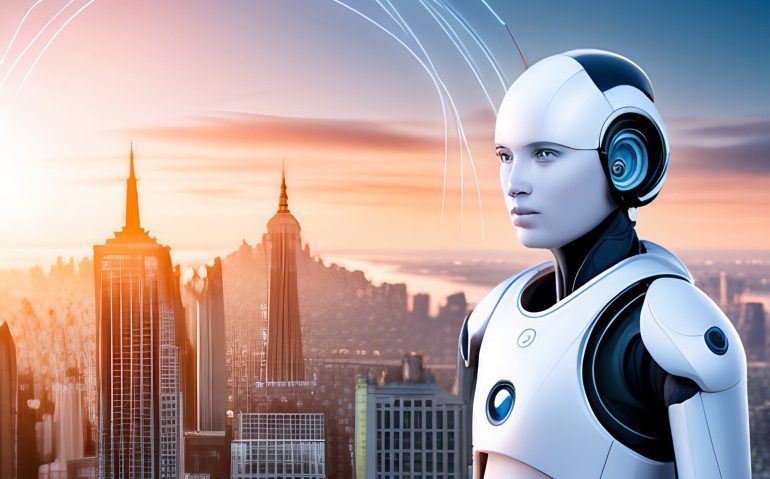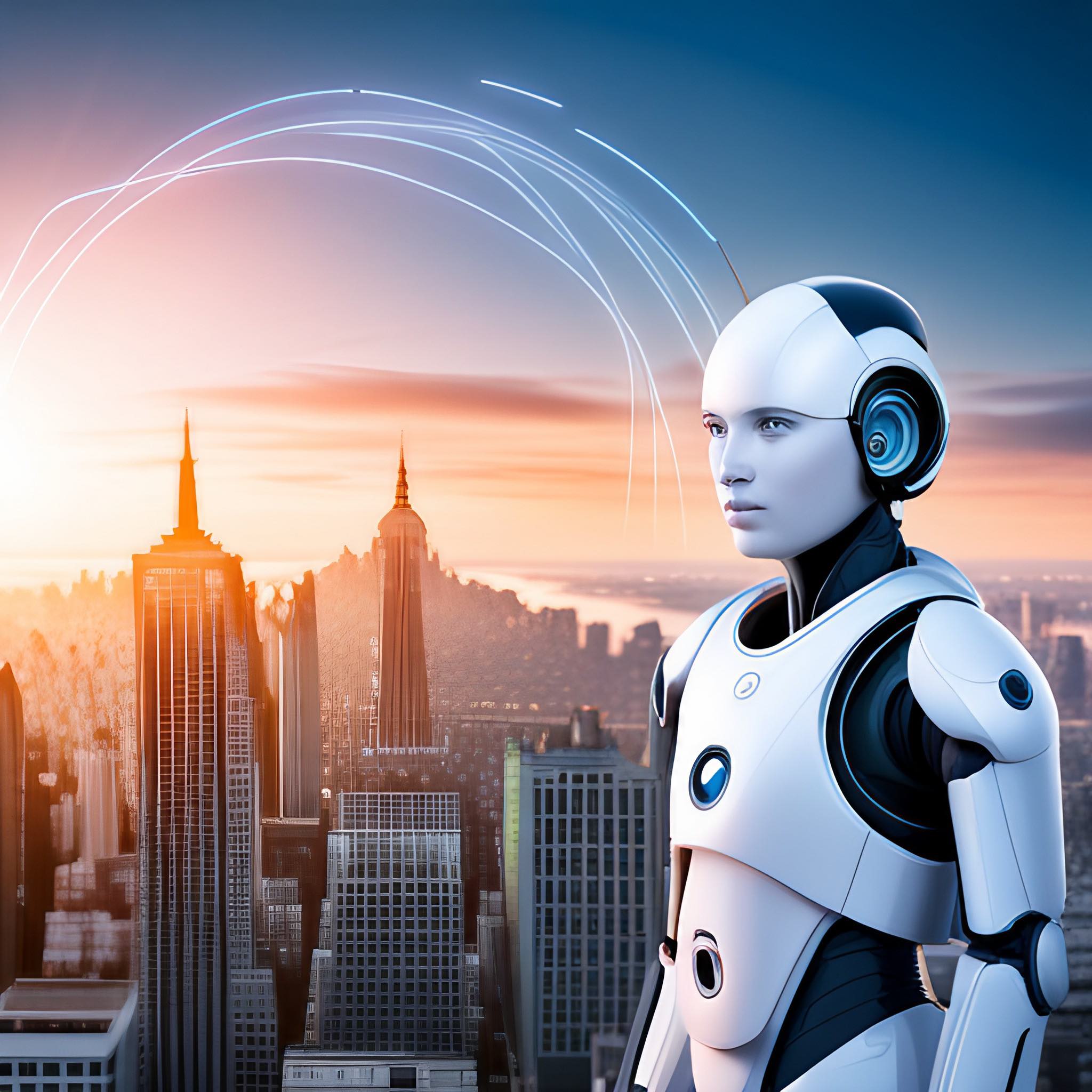Artificial Intelligence or AI has been a buzzword for quite some time now. But, today, AI is more than just a buzzword. It’s a technology that is changing the world. From smartphones to self-driving cars, AI is becoming ubiquitous in our lives.
In this blog post, we’ll explore the top 10 latest AI technologies that will change the world. We’ll discuss each technology in detail to give you a better understanding of what they are and how they impact our lives.
Natural Language Generation (NLG)
Natural Language Generation (NLG) is an AI technology. It gives machines the ability to turn data into written text that humans can easily understand.
With NLG, these AI machines can create reports, write articles, and compose summaries in much the same fashion a human could. This technology has numerous practical applications in fields ranging from customer service to chatbots and content creation. Simply put, NLG provides us with another method for machines to effectively communicate information without any human involvement.
Advanced Machine Learning (AML)
Advanced Machine Learning (AML): It’s an ambitious AI technology that is revolutionizing the Machine Learning space. Examples of AML on the rise include advanced use cases in image and speech recognition, fraud detection, and even personalized advertising.
Through deep learning algorithms, machines become more capable of providing analytical analyses without instructors explicitly programming them to do so. AML signals a move towards autonomy. This indicates that machine learning models will soon surpass the status quo, driving society into the modern era. We anticipate a beneficial relationship with AI technology!
Neural Machine Translation
Neural Machine Translation (NMT) is an AI technology. It provides a new level of language translation and comprehension. By utilizing deep learning algorithms, it initiates comprehensive understanding to provide insight into complexities of one language over lengthy context transitions.
This technology is currently being used for multiple purposes. Examples include translation services provided by global businesses and cultural organizations that need translators in various regions. This increases accessibility and improves international relations. NMT with continuous updating capabilities has become the primary source for dynamic multilingual support on an instantaneous basis.
Chatbots
A chatbot is a program powered by Artificial Intelligence (AI). It is designed to interact with people in the same way a customer service, lead generation, or sales representative would. Leveraging AI technology enables you to get instant answers to queries. You can also gain informative insights quickly and accurately. Additionally, tasks can be completed faster than traditional methods that require a human operator.
The Chatbot has become an important tool in many organizations. It offers amazing efficiency and accuracy in conversational engagements. This makes it invaluable for completing important tasks.
Autonomous Vehicles
Autonomous Vehicles: The future of transportation innovation is here. Autonomous Vehicles, or self-driving cars, use modern Artificial Intelligence (AI) to provide a driving experience free from human intervention.
Their operations are aided by diverse sensory resources, such as advanced GPS systems and improved radar and cameras. Advantages of these vehicles include decreased accidents and increased accessibility for seniors and people with disabilities. They stand at the frontier of new tech advancement, poised to revolutionise roads worldwide.
Predictive Maintenance
Predictive Maintenance is an advanced type of Artificial Intelligence (AI). It can accurately predict when equipment will fail.
This tool is revolutionary. It helps businesses in the manufacturing, energy and transportation sectors create maintenance schedules. This ensures that repairs or improvements can be made before it is too late.
Predictive Maintenance replaces the traditional reactive approach of dealing with machinery dramas when they occur. Proactive responses are now used instead. This saves time and money.
Computer Vision
Computer Vision is a rapidly evolving artificial intelligence technology that allows computers to ‘see’ and comprehend the visual world. In essence, it is like teaching a machine to interpret images and videos in the same way as we do.
The applications of computer vision span myriad areas such as facial recognition, object detection, and medical imaging. This technique can be very useful in providing healthcare services to everyone. It enables machines to give doctors accurate diagnoses with the help of advanced x-ray imagers.
Computer vision is expected to have a huge impact on different industries. Autonomous aerial vehicles, such as drones, have been enabled by computer vision to identify objects.
Sentiment analysis
Sentiment analysis is an area of artificial intelligence that has risen to immense popularity among marketers and opinion researchers. It allows companies to detect positive and negative sentiments from social media posts, reviews, along with other text-based content.
Sentiment analysis is part of the larger framework of public opinion analysis. It provides stakeholders with evidence of customer attitudes and preferences. This evidence is real.
Contrary to manual coding processes, majority sentiment can be measured quickly. This helps budget conscious teams to optimize their investments according to current trends.
Surprisingly, this new technology has been used in many important decisions made by companies. These decisions were made to understand how consumers react to targeted campaigns.
Speech recognition
Speech recognition uses artificial intelligence technology to understand and interpret words said by humans. For instance, it can be used in virtual personal assistants, so a person can operate it with just their voice. It is also found in various activities, from hands-free availability to voice control services which allow us to control entertainment systems without even touching the remote!
Speech recognition applications provide a convenient way for optimal communication. Speech-to-text helps drive time efficiency in many areas of life. This offers a great benefit.
Recommendation engines
Recommendation engines are powered by Artificial Intelligence algorithms. These systems focus on suggesting products, services, and content based on a user’s past preferences and activities. Utilizing information from their prescribed user profiles, recommendation engines supplant the need to manually search for potential interests.
Their presence can be found across platforms such as eCommerce Web sites, entertainment streaming services, and online advertisement breadths. Described further, they use collected data to create recommendations that are remembered whereas unique user subjects find what it is looking for without considerable effort or instructions. As algorithms advance in proficiency many users find these chance tailors sway decision making to rational opinions rarely evaluate outside perspectives such the curates.
AI technology is constantly evolving. The advancements made in AI technology have the potential to change the world in ways we never thought possible.
The 10 AI technologies that we discussed in this blog post are just the beginning. From autonomous vehicles to chatbots, these technologies have the power to change the way we live, work, and interact with each other. As we continue to explore and develop new AI technologies, we can expect to see more life-changing innovations that will shape the future.







